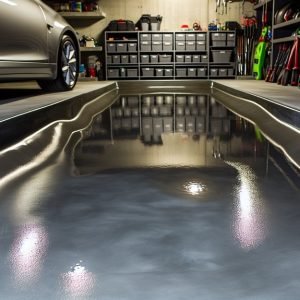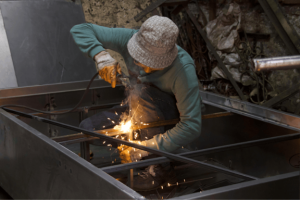Last Updated on October 30, 2025 by teamobn
Water is life’s ultimate resource. Imagine waking up with no water to brush your teeth or shower! It’s a terrifying thought. Yet, it’s a reality for many parts of the world. This is why conserving water at home is an absolute must.
Contents
Fix Those Leaky Faucets
Drip, drip, drip. That’s not just annoying; it’s money and precious water down the drain! Even a tiny leak can waste hundreds of gallons annually. Check for leaks and repair them. Instantly. Every drop counts! During a drought, fixing leaks becomes even more important. Prioritizing such repairs can have a substantial impact on the amount of water preserved at the community level.
To address ongoing plumbing issues, consider reaching out to an affordable plumbing service to ensure effectiveness and leak prevention in your household systems. Timely intervention can make a significant difference in water conservation.
Taking the time to include leak detection as part of your routine home maintenance can pay off immensely. Use your water meter at a set interval and watch for an unexpected increase when no water is being used. This simple check can help identify potential leaks that might otherwise go unnoticed.
Low-Flow Showerheads Save the Day
Say goodbye to high water bills! Low-flow showerheads use significantly less water than regular ones, without compromising your shower experience. It’s a small swap. Big impact. If you’re accustomed to showering with high-pressure jets, it’s time to experience the less-is-more philosophy. You’ll still get that refreshing feeling, all while contributing to conservation efforts. Many cities even offer rebates for installing these eco-friendly alternatives.
Adopting a low-flow lifestyle doesn’t stop in the shower. Consider investing in aerators for your faucets, too, which can mix air with water to give a full-flow sensation while using less water. Small choices like these, applied consistently across different water outlets in your home, contribute significantly to conservation.
Be Smart with Dishwashing
Are you guilty of running water while washing dishes? Stop! Fill one side of the sink with soapy water and the other with rinse water. Better yet, use the dishwasher. It’s surprisingly more water-friendly than washing by hand. Who knew? Evaluate your dishwasher’s settings—use the low-water option when available. If your dishwasher is an energy-efficient model, you’ll be multiplying water savings too.
Another beneficial practice is scraping off food residue rather than rinsing dishes before placing them in your dishwasher. This small adjustment can conserve gallons of water each time you wash a load, making it a notable habit to start implementing as soon as possible. Also, avoid running the dishwasher until it’s completely full—half loads waste both water and energy. Check your filter and spray arms regularly to keep performance optimal. Periodic maintenance helps the machine stay efficient, ensuring water is used only where it counts.
Harness the Power of Rainwater
Why let rainwater go to waste? Build a simple rain barrel system to collect it. Use this natural water source for your garden or washing your car. Smart, sustainable, and free! Not only does this cut down on utility expenses, but rainwater is also often better for plants, lacking the chlorine often found in tap water. It’s a win-win situation—save on bills and help your garden thrive!
Rainwater collection systems can also be scaled up to include sophisticated filtration and storage methods, providing for more significant portions of your household’s water needs. Exploring these possibilities not only makes economic sense but also brings an enriching, hands-on understanding of water conservation. Even a small barrel system can collect hundreds of gallons during a single rainfall, so placement and maintenance are key to maximizing benefits. Be sure to cover barrels to prevent mosquito breeding and keep debris out, ensuring the water stays clean and usable.
Shorten Your Showers
Love lounging in the shower? Cut it out. Limit your showers to five minutes. Use a timer if you must. Little trims on shower time equal gallons saved. Break routines like brushing your teeth or shaving in the shower. Implementing these changes can drastically decrease your environmental footprint, making each shower a thoughtfully placed investment in a sustainable future.
Another fun way to keep shower durations in check is by using music. Pick a song with a suitable length and aim to finish your shower before it ends. This enjoyable technique not only makes things more pleasant but also effectively sets a time limit on water use. And if you haven’t already, install a low-flow showerhead—it maintains good pressure while using much less water per minute. Combine this with turning off the water while lathering up, and you’re making the most of every drop.
Efficient Toilet Use
The toilet isn’t a trash can. Flushing tissues? Wasteful! Consider getting a dual-flush toilet or putting a large plastic bottle filled with water in the tank. Less water, same result. You might be surprised at how much of your household’s daily water usage is attributed to flushing. Encouraging your household to be mindful of toilet usage can greatly reduce the collective water footprint over time.
Check for leaks, too—silent toilet leaks can waste dozens of gallons daily without notice. Add a few drops of food coloring to your tank and wait 10 minutes. If color seeps into the bowl without flushing, you’ve got a leak. Fixing it is simple and cost-effective. Also, teach children to avoid unnecessary flushes—those habits add up. Regular checks and smart habits together make toilets far less wasteful.etter yet, use the dishwasher. It’s
Wash Full Laundry Loads
Smaller loads mean wasted water. Gather a full load before running your washing machine. Plus, choose the right cycle to minimize water use. Consider cold washes where feasible—it helps both in conserving water and maintaining the longevity of your clothing. Don’t overlook your laundry habits as a tool for smart water use.
For even more savings, consider installing a greywater system that redirects rinse and wash cycle water for garden or landscape use, integrating even the often-discarded resource back into your household’s eco-friendly practices.
Wrapping it up…
Global warming is changing rainfall patterns while at the same time melting Earth’s glaciers. As custodians, humankind needs to nurture and protect all freash water resources. In every way, every day, the practices outlined above, conserve water and cut costs. It’s a win-win situation!
Start implementing these changes at home and make a real difference. Our planet deserves it, and so do your pockets!






